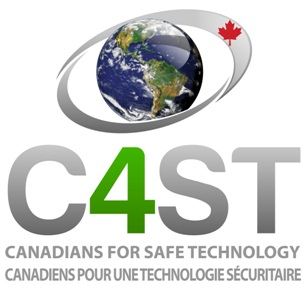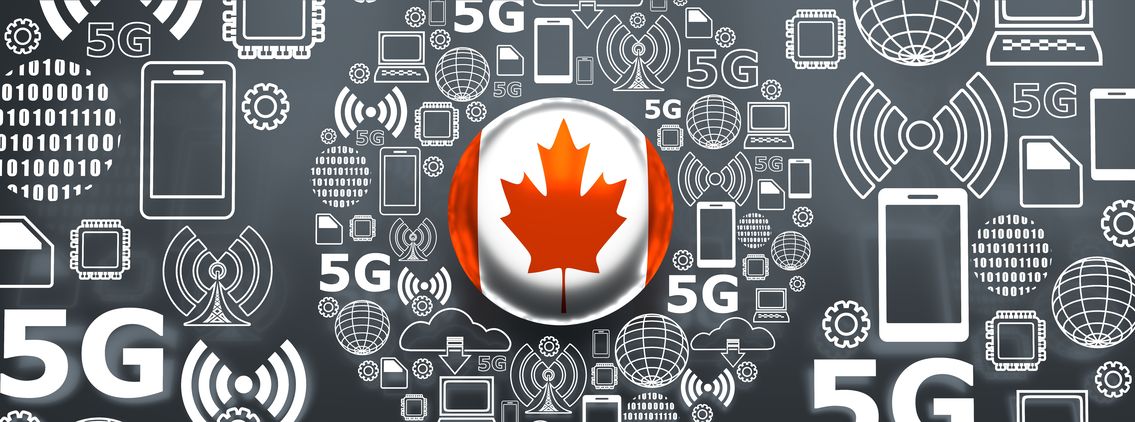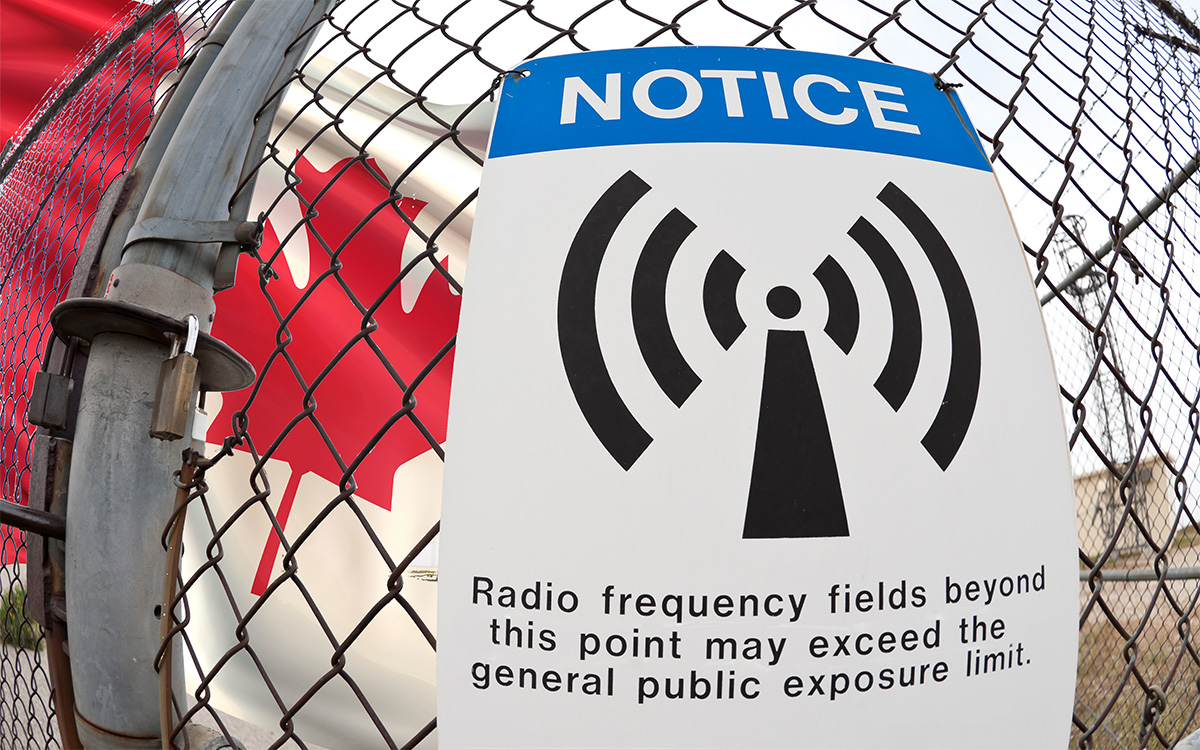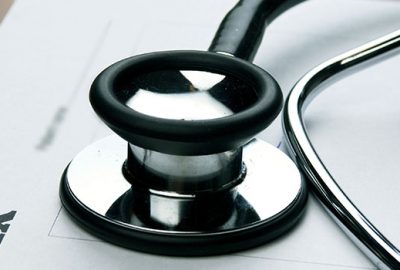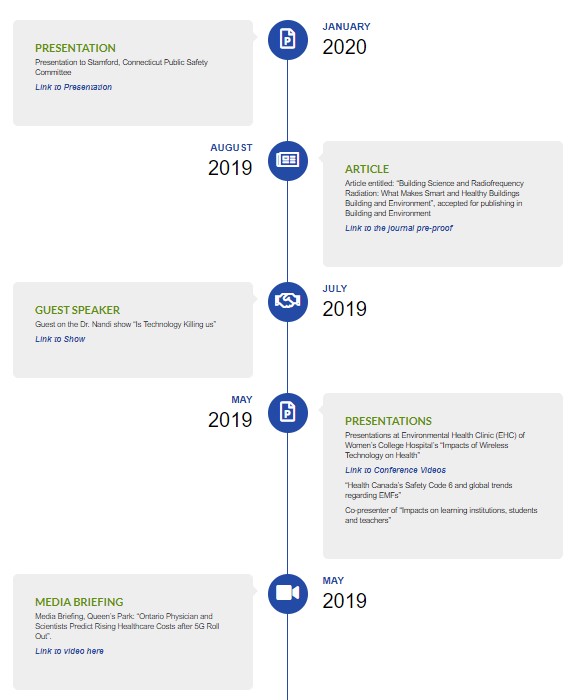Canadians For Safe Technology is a not-for-profit, volunteer-based coalition of parents, citizens and experts whose mission is to educate and inform Canadians and their policy makers about the dangers of the exposures to unsafe levels of radiation from technology and to work with all levels of government to create healthier communities for children and families.
C4ST Actions Timeline
From Letters and Presentations to Media Briefings and News Coverage, you’ll find all of the key actions taken by C4ST here with relevant links and articles in an easy to navigate timeline.
Get Involved
Radiation emitted from wireless devices and cell towers is a form of electro-magnetic radiation (EMR). EMR includes electric waves and magnetic waves as well as microwaves. Wireless radiation, also called radiofrequency radiation, is part of the microwave radiation range. All wireless devices emit wireless radiation, including cordless and mobile phones, wireless baby monitors, televisions, tablets, laptops, and GPS systems. They emit wireless radiation when they are turned on and also when connected to a network or cell tower. Smart meters and Wi-Fi also emit wireless radiation.
This type of radiation has been categorized as a 2B potential carcinogen by the World Health Organization (WHO). Lead and DDT are in the same category. Several international panels, including the BioInitiative Group, have concluded that wireless radiation is not safe, and requires restrictions and improved guidelines on human exposure. The latest information concerning wireless radiation as a possible carcinogen comes from Swedish researchers in a study published in the International Journal of Oncology. The study confirms previous results of an association between mobile and cordless phone use and malignant brain tumours.
Beyond an increased risk of cancer, wireless radiation is harmful to humans in many ways. Some Canadians have noticed changes in their health, such as increasingly severe headaches and pain, fatigue, rashes, memory lapses, and dizziness. Combined, these symptoms have been characterized as “electrohypersensitivity” (EHS). People living with EHS find that their symptoms recur when they are in physical proximity to cell towers, Wi-Fi, smart meters and other EMR-emitting devices. People affected by EHS often must take measures to distance themselves from any location where EMR is present. This has consequences including their ability to work and support their families.

